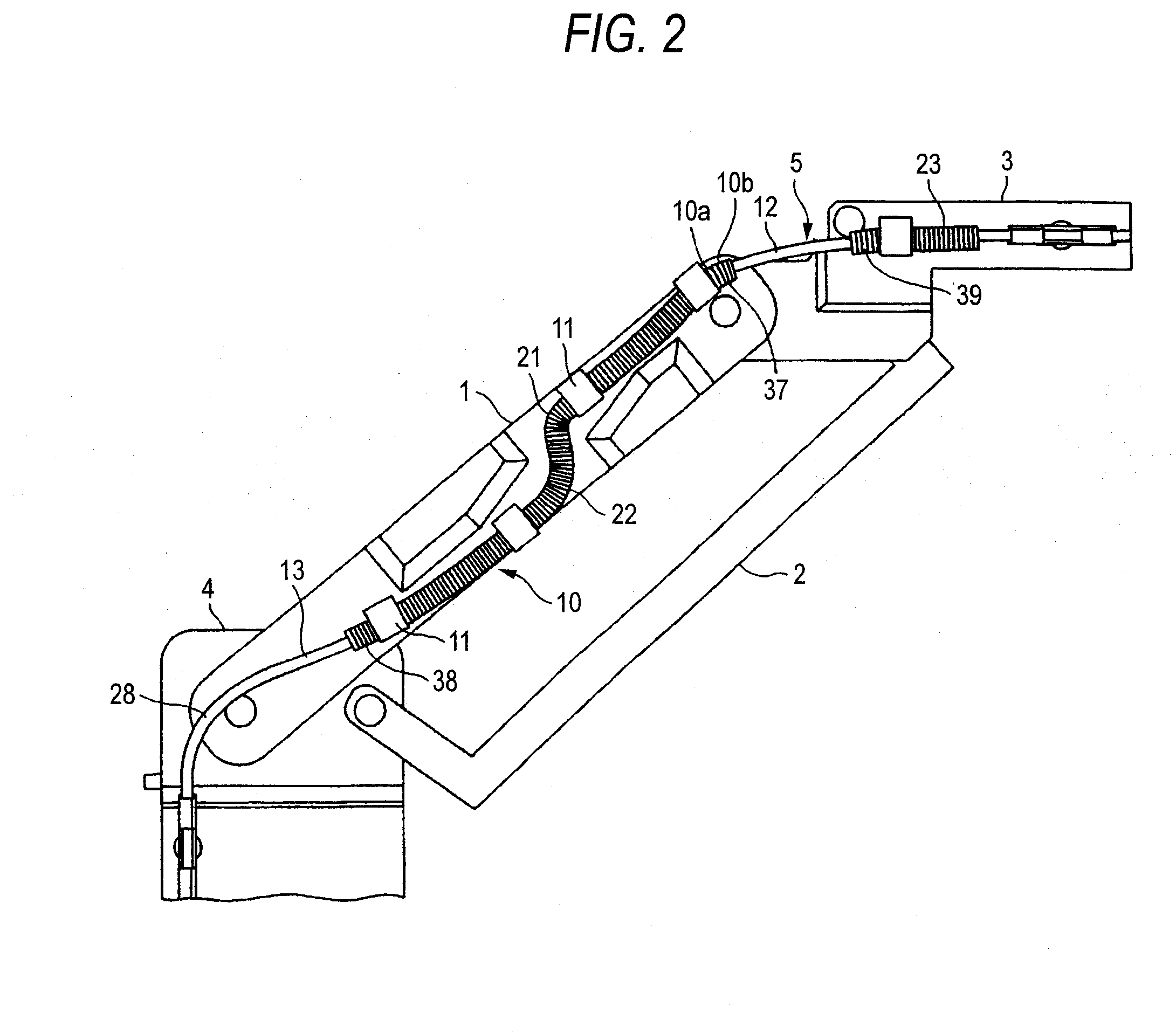Installing structure of wire harness
a technology of installing structure and wire harness, which is applied in the direction of machine supports, mechanical devices, and other domestic objects, can solve the problems of excessive length, high cost of support members, and excessive time and labor, and achieve the effects of preventing looseness, facilitating and positively absorbing, and enhancing the reliability of continuous supply of electric power to the movable structure body
- Summary
- Abstract
- Description
- Claims
- Application Information
AI Technical Summary
Benefits of technology
Problems solved by technology
Method used
Image
Examples
Embodiment Construction
[0052]FIGS. 1 to 4 show one preferred embodiment of an installation structure (of installing a wire harness on a link) of the present invention. The link of this embodiment is so designed as to store a roof (not shown) of an automobile in a folded manner in a luggage space (not shown) at a rear portion of the vehicle.
[0053]FIGS. 1 and 2 show a closed condition of the roof in which two (upper and lower) links 1 and 2 are pivotally moved forwardly toward the front of the vehicle to be disposed upwardly obliquely, and FIGS. 3 and 4 show an open condition of the roof (the condition in which the roof is stored or stowed in the luggage space) in which the links 1 and 2 are pivotally moved rearwardly toward the rear of the vehicle to be disposed in a slightly downwardly-slanting position relative to a horizontal direction.
[0054]As shown in FIGS. 1 and 2, the wire harness (comprising a plurality of insulating sheathed wires) 5 is installed on the main link (pivotal link) 1 of a larger width...
PUM
 Login to View More
Login to View More Abstract
Description
Claims
Application Information
 Login to View More
Login to View More - R&D
- Intellectual Property
- Life Sciences
- Materials
- Tech Scout
- Unparalleled Data Quality
- Higher Quality Content
- 60% Fewer Hallucinations
Browse by: Latest US Patents, China's latest patents, Technical Efficacy Thesaurus, Application Domain, Technology Topic, Popular Technical Reports.
© 2025 PatSnap. All rights reserved.Legal|Privacy policy|Modern Slavery Act Transparency Statement|Sitemap|About US| Contact US: help@patsnap.com



